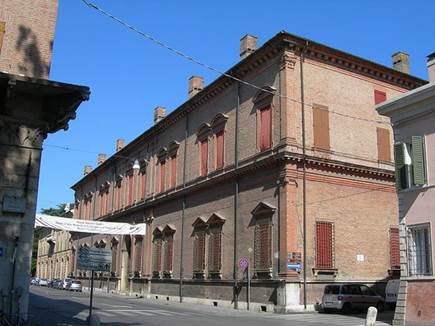
 (book cover and Waldmann as Amneris)
(book cover and Waldmann as Amneris)CARTEGGIO VERDI-WALDMAN (1873 – 1900) a cura di Marco Beghelli e Nicola Badolato

 (book cover and Waldmann as Amneris)
(book cover and Waldmann as Amneris)
Instituto Nazionale di Studi Verdiani, Parma 2014
ISBN 978-88-85065-57-4
Maria (born Marie) Waldmann (1845 – 6 November 1920) was an Austrian contralto who had an exceptional association with Giuseppe Verdi.
Biographical data are difficult to retrace. She was born in Vienna in 1845 and studied with soprano Adele Passy-Cornet (1838-1915). She dedicated herself to the Italian mezzo-soprano repertoire. Waldmann made her debut as the third Lady in Mozart’s Zauberflote at the Vienna ‘Hofoper’ in August 1865. A career in the mezzo repertoire followed. Waldmann also appeared in Wiesbaden in 1886 in Meyerbeer’s Prophète which concluded her ‘German’ career. She moved to Italy where she continued studying with Francesco Lamperti.
She was heard with Teresa Stolz in September 1869 in a production of Don Carlo in Trieste.
Thereafter she sang in Moscow and at La Scala, Milan where, in 1871-2, she appeared in both La forza del destino and as Amneris in the European premiere of Aida (8 February 1872). Despite Verdi's initial reluctance to engage Waldmann for that premiere, she became his favorite Amneris. From 1873 – 76 she appeared in Cairo every year.
In 1874, Verdi again used her for the mezzo-soprano role in his Requiem, for which he wrote the Liber scriptus with her voice in mind. Verdi particularly valued her for the rich, dark color of her lower, contralto register. Verdi exploits that to great effect in the Liber scriptus, which focusses on the mid- and low-registers of the mezzo-soprano range.
Maria Waldmann retired from the stage very early, at the age 31, after marrying Duke Galeazzo Massari. She lived with him at Palazzo Massari on the Corso Parto Mare in Ferrara. After her retirement, she enjoyed Verdi's and his wife's affection for many years and she maintained a long correspondence with Verdi, almost until his death. Her husband died in 1902, and she died in 1920, in Ferrara.
 (the Palazzo Massari in Ferrara)
(the Palazzo Massari in Ferrara)
This volume of correspondence between the composer and the singer is the first in a series of Verdi’s letters by the National Verdi Institute based in Parma. The letters contain information about the artistic life of both artists yet also focusses on the intimate lives of both personalities especially bearing in mind that Waldmann retired from the stage so early. Giuseppina Strepponi is another presence in the letters and a manifestation of respect and sincere friendship between the two women.
The correspondence starts in 1873 with Verdi at the pinnacle of his career and ends in 1900 shortly before the composer’s death.
The book is beautifully produced as only Italians can with glorious high quality reproductions of photos of the artists, playbills, letters etc.
The book consists of several chapters starting with an introduction putting the correspondence in the right perspective. Included is also the most complete biographical sketch of Waldmann’s career. The letters are presented chronologically (pg. 83 – 366) and are all annotated with additional informative notes. Four appendices follow which include letters of the singer to the Casa Ricordi and Teresa Stolz. A detailed index is included as well.(pg 451 – 468) An additional name index is devoted to operas, instrumental , vocal and sacred music.
All praise to both authors for an excellent job in preserving the heritage of Italy’s greatest opera composer.
Click here to listen to Marco Beghelli talk about singing, singers and their heritage